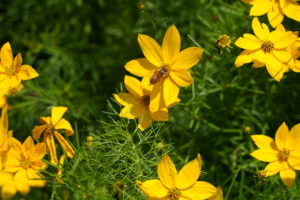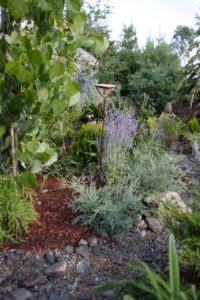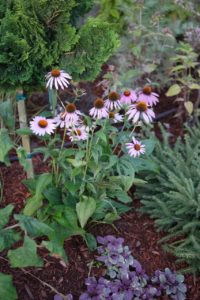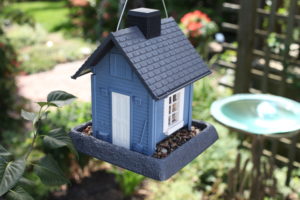Biodiversity is one of the most important issues being discussed among today’s environmental leaders and organizations. It is so important, that this year’s World Environment Day (June 5), an annual observance dedicated to inspiring environmental action across the globe, was entirely themed around biodiversity and what individuals, governments and organizations can do to support it around the world.
And while biodiversity is a global issue, it’s also one that anyone can easily tackle in their own gardens at home and in their community.
Last week, I sat down with Dr. Amy Enfield, ScottsMiracle-Gro’s resident expert on gardening and master horticulturist, to learn more about biodiversity and what people can do to make their personal and community gardens more biodiverse. Here is what I learned…

Q: What is biodiversity and why is it important?
A: Biodiversity is basically variability of life in an ecosystem. This means having a wide variety of plants, animals, insects, fungi, etc. all in one place, whether in a huge piece of land, like a forest, or a smaller area, like a garden.
Biodiversity is important because in an ecosystem, every living thing plays a crucial role. The more diverse the space, the more these living things work together and thrive. It’s all about balance and symbiosis.
Q: What are some of the benefits of a biodiverse garden?
A: Biodiverse gardens, especially ones that embrace naturalism and native, local plants, tend to do better and require less upkeep than more formal gardens.
Additionally, when you provide shelter and food for natural predators, like garden snakes and frogs, you don’t have worry as much about pests, which eliminates the need for pesticides.
Beyond that, because biodiverse gardens tend to be more natural, they can be really beautiful without much effort.

Q: What kinds of changes can you make to your garden to make it more biodiverse?
A: It’s honestly really easy to make a garden more biodiverse. From a gardening standpoint, one thing you can do is add plants that are native to your region, rather than ornamental ones. Native plants are more like the natural habitat of the animals you want to attract to add biodiversity.
You can also add pollinator plants, such as Echinacea (Coneflower), that provide pollen and nectar to bees and butterflies, as well as shelter to these pollinators in their adolescent life stages.
Other things you can do to increase the biodiversity of your garden include adding trees or shrubs to provide shelter and food for animals. Water features, like ponds or streams, are great in bigger gardens, and provide water to animals, as well as open the door to a host of new aquatic organisms.
In broader terms, think about everything a living thing needs to survive – water, food and shelter – then simply add to your garden.

Q: Are there ways to create a biodiverse environment if you are on a budget or don’t have a lot of space?
A: Definitely! Simple things, like adding a bird house or butterfly water dish, can go a long way toward adding biodiversity. Both garden features give creatures a place to rest and recharge or take shelter.

Q: Is there anything people should avoid when planting a garden?
A: The two biggest threats to biodiversity are structured or formal environments and invasive species.
Formal green spaces, such as the ones you might see in a city, tend to eliminate natural habitats and that removes a lot of the biodiversity. Rather than just thinking about what is pretty to look at, think about what lives around you and look for ways to cater to those species by creating shelter and providing food and water.
The other major threat to biodiversity is invasive species. These are plants not naturally found in a region. In many cases, these plants were introduced because they grew faster than their native cousins or, perhaps, they looked nicer in neighborhoods or parks. While aesthetically, these plants may look nice, they can actually choke out native plants, which is bad for our local ecosystems.
If you are unsure which plants are invasive and which are native to your area, just look online. Many state and local governments have published lists, so you know what to avoid.
Q: Any last words of wisdom to anyone looking to diversify their gardens?
A: My favorite saying is, “If things aren’t eating your plants, your garden isn’t diverse enough.” We all want our green spaces to be beautiful, but there are ways make them both aesthetic and functional.
Embrace the imperfections, like those annoying little holes in your plants, and welcome all types of animals and insects – it usually means you are doing something right!
Learn how to incorporate more pollinators into your personal or community garden.

